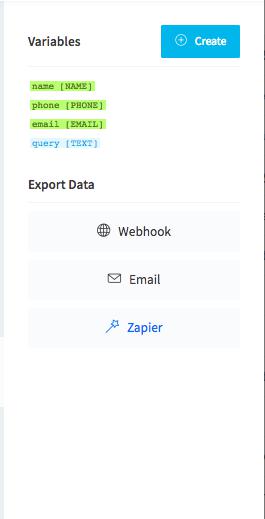Verloop.io is the best conversational platform out there that can do lead generation and qualification for you 24×7. Once you have captured the lead, you might want to use that data in your existing CRMs for further analysis and action.
There are three ways to export your data about your customers from Verloop.io recipes to other CRMs. Only one of these three options can be enabled at any point in time.
Export Via Email
This is the most simple method of all the export options. If you get less than 20-30 users per day on your Verloop.io bot, this method would be the right choice for you.
At the end of the conversation with the customer, Verloop.io sends an email to your email ID. This email will have all the details given by the customer in that conversation, like Name, Email, and Phone Number. This will also have a link to the conversation so that you can take a look at what exactly happened.
You can set the email on which you want to receive the mail. In the Export Data section of your recipe, select Email and enter your email and hit enter.
- Go to Bot Recipe

2. Click on the 3 dot menu, available on the right side of the dashboard, as shown below.
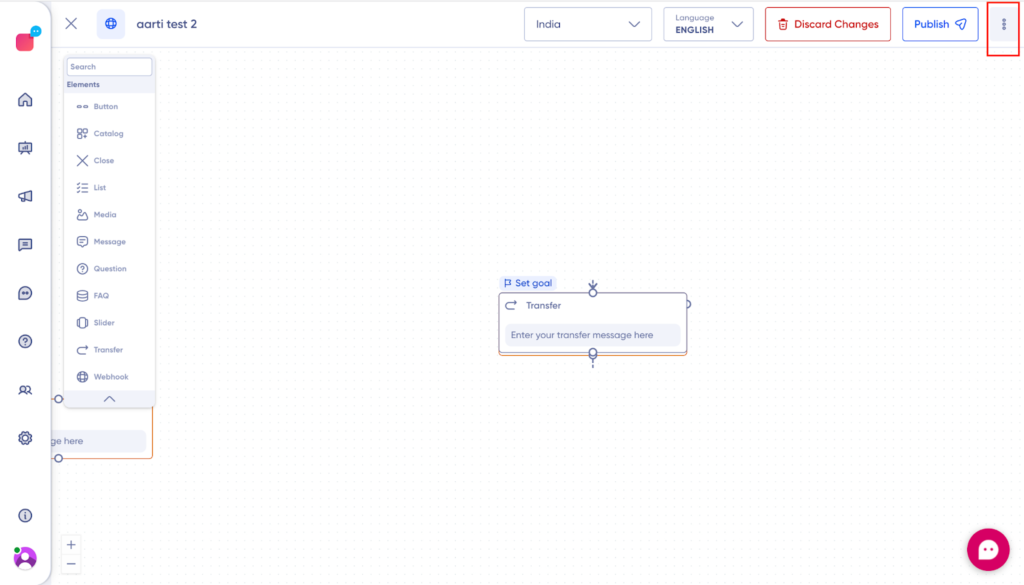
3. Once you click on the 3 dot menu, a drop-down menu will show where you can,
- Edit recipe name
- Or navigate to the General settings menu. Click on the General Settings button.
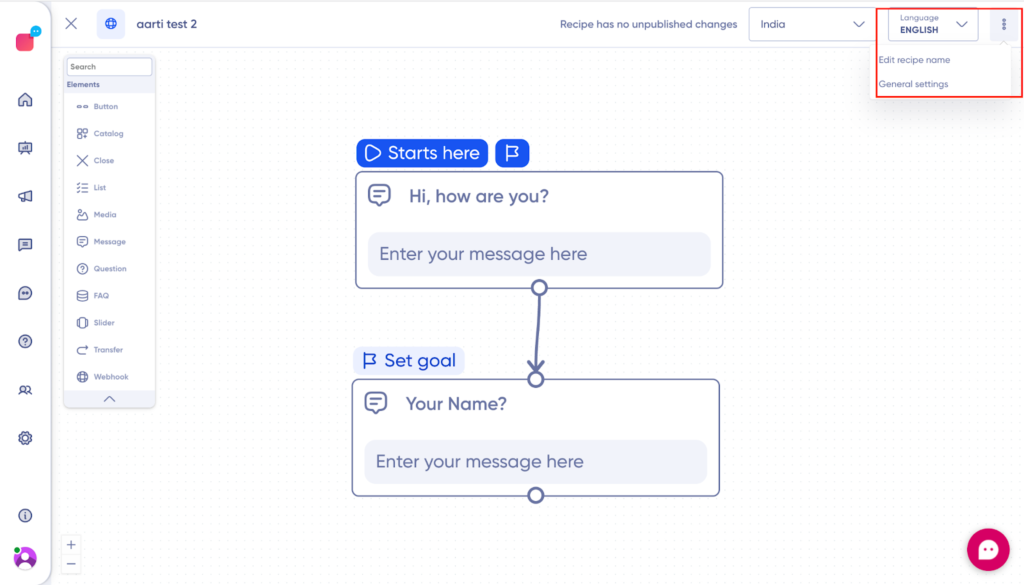
4. In the general settings, click on the Export button, as shown below.
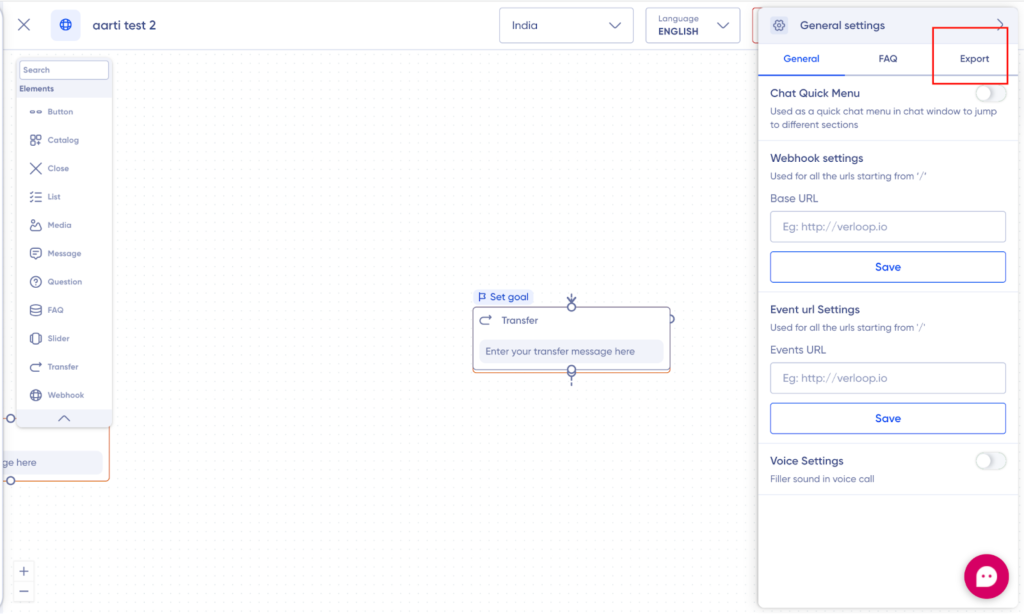
If your recipe is already published, then you will be shown options via which you can export the data.
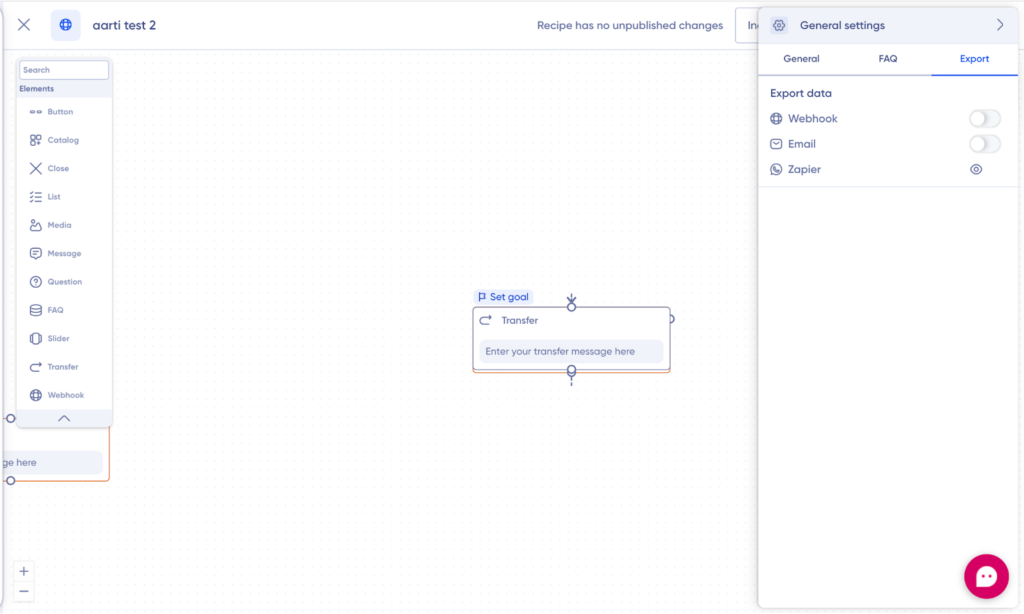
5. Click on the Email toggle button and you will be prompted with a pop-up screen to add your email address.
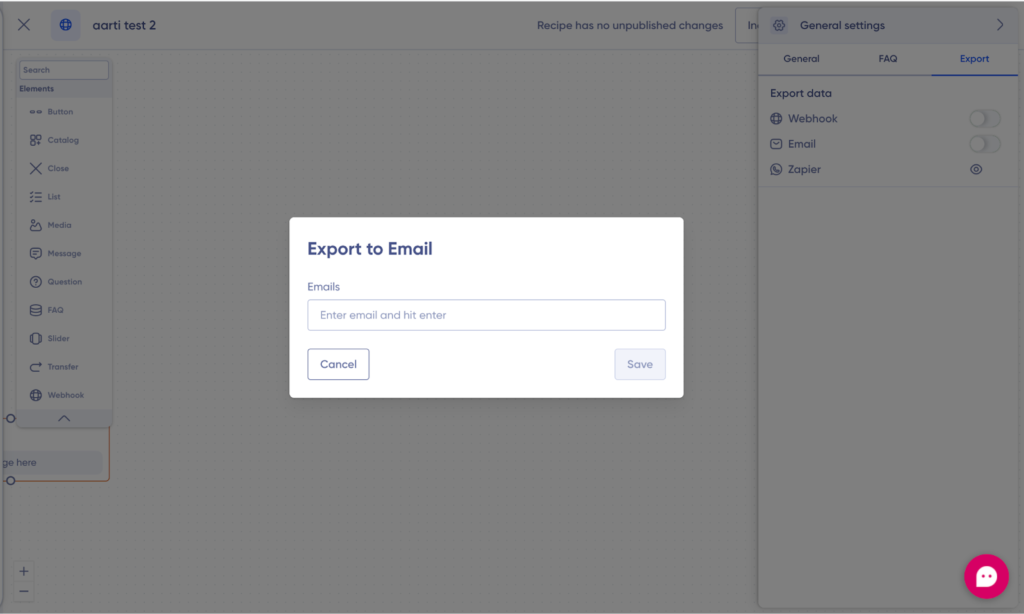
6. Add your email address, and click on save.
And here is a sample email you get on your email id.

Export Data – Sample Email
Export Via Webhook
This option will send a POST request to a URL of your choice. You will need to do some programming at your end to extract data from this POST request and save it.
You can set the URL to be used for receiving webhook. In the Export Data section of your recipe, select Webhook and configure the webhook URL. We strongly suggest using the HTTPS scheme and adding a basic auth token to make the webhook secure.
- Go to Bot Recipe
- Go to Bot Recipe
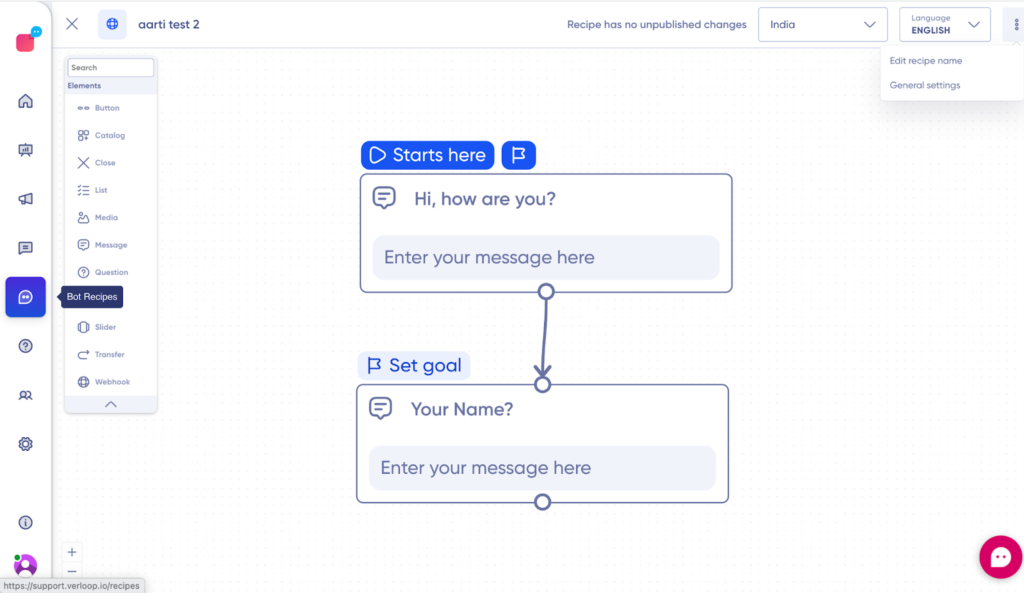
3. Click on the 3 dot menu, available on the right side of the dashboard, as shown below.
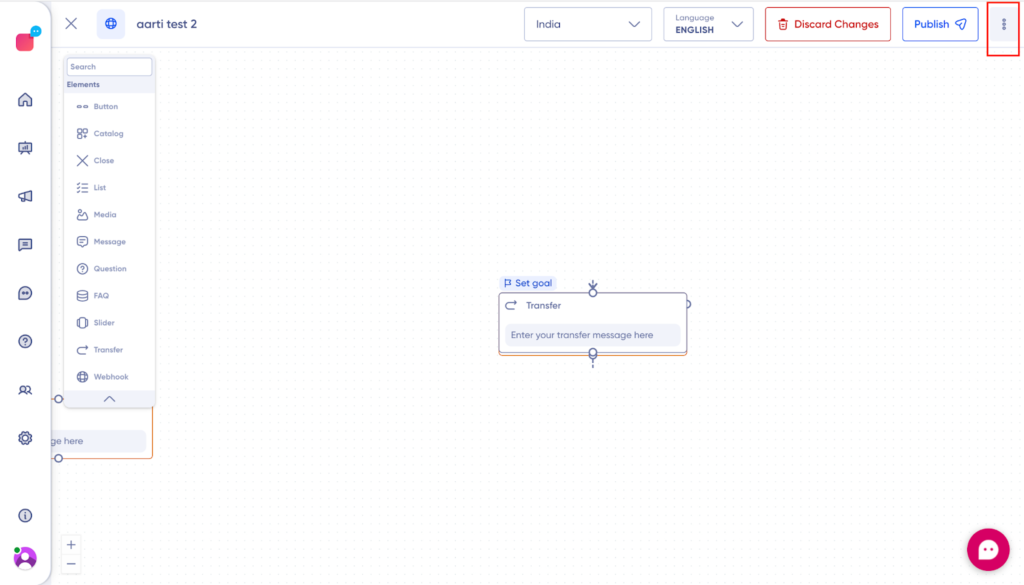
4. Once you click on the 3 dot menu, a drop-down menu will show where you can,
- Edit recipe name
- Or navigate to the General settings menu. Click on the General Settings button.
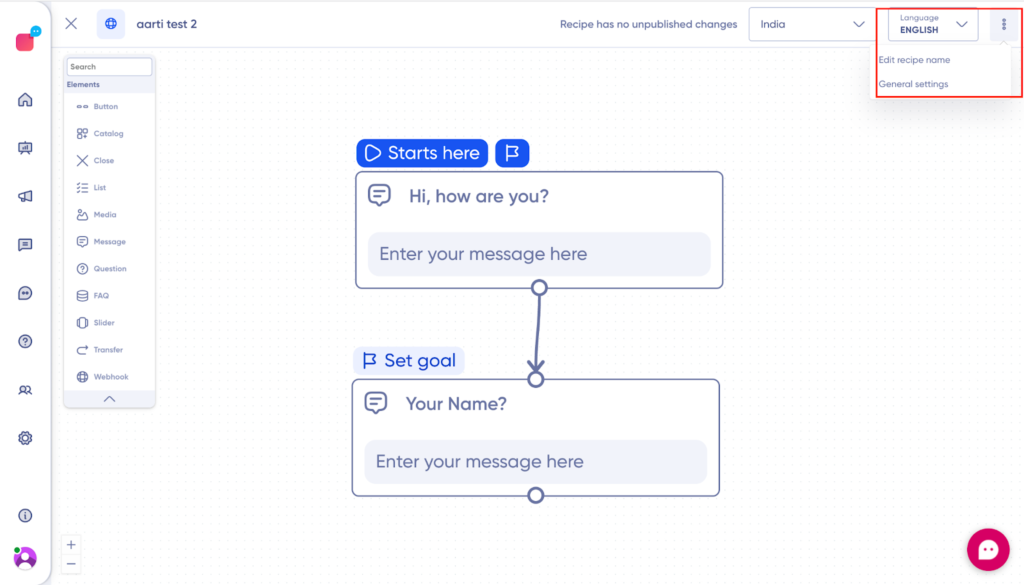
5. In the general settings, click on the Export button, as shown below.

If your recipe is already published, then you will be shown options via which you can export the data.
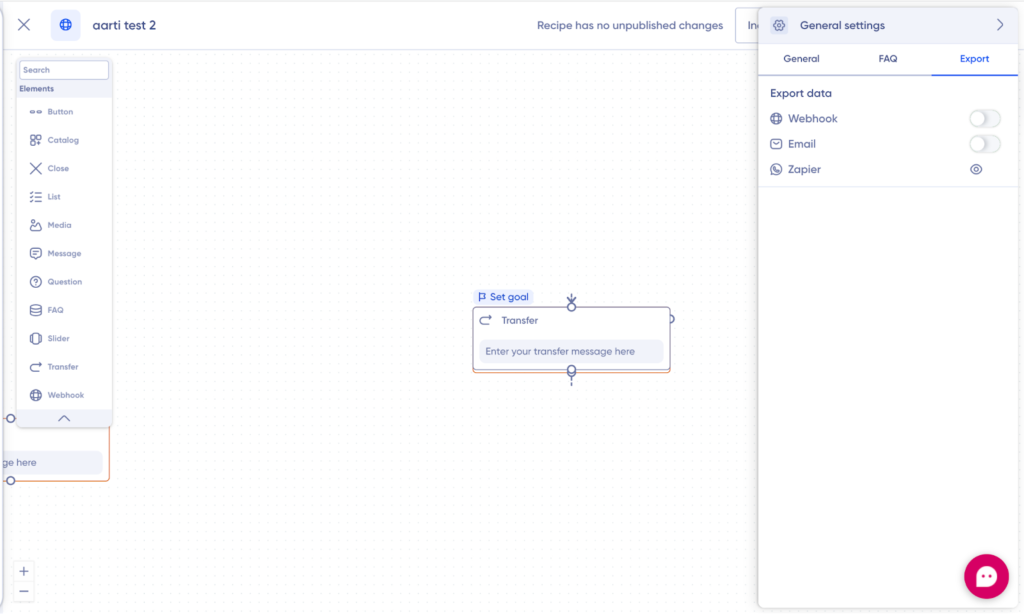
7. Click on the Webhook toggle button and you will be prompted with a pop-up screen to enter:
- Webhook URL
- Basic Authentication Token
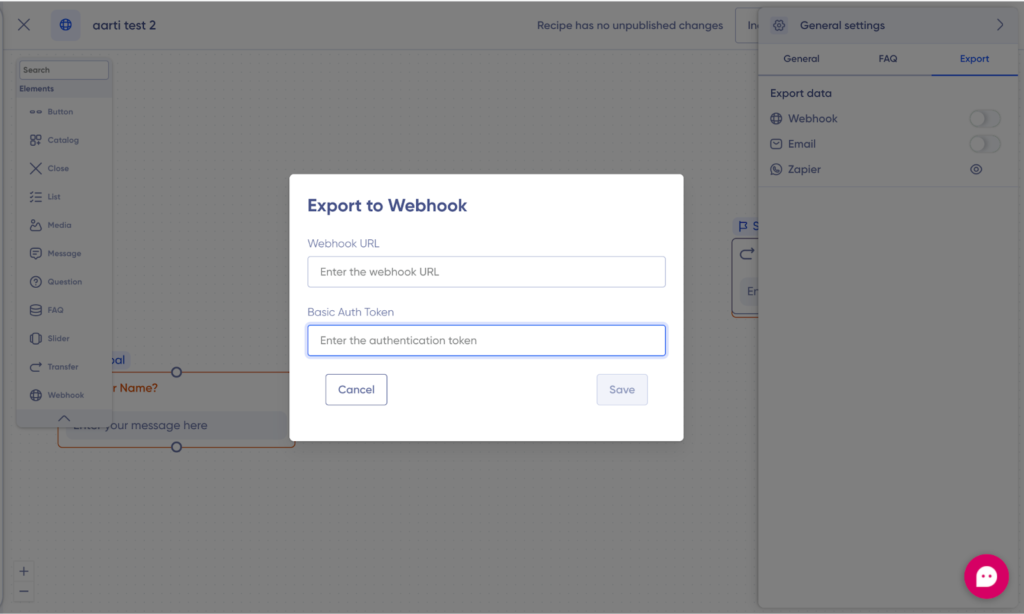
Add these data and click on the save button.
- Enter Webhook URL
- Enter Basic Authentication Token
And here is a sample of the data provided by the webhook. The webhook will have details of all the variables of that recipe.
{
"name": "John Jacobs",
"email": "john.jacobs.7583675@gmail.com",
"query": "I want to know if I can cancel the subscription if I don't like your product",
"pincode": "560075",
"verloop_timestamp": "05:32:39 AM, 24 Apr 2018",
"verloop_chat_link": "https://ultimatecompany.verloop.io/live/4"
}Export Via Zapier
Verloop.io also supports exporting data directly to your CRMs via Zapier.
Zapier is a service which helps you in interconnecting apps. You can connect Verloop.io with other apps like Hubspot, Google Sheets, Gmail, Active Campaign, Pipedrive etc…
Here we show you how to connect Verloop.io with Google Sheets. This article explains the steps involved in the process with screenshots of the relevant screens.
Inside your Zapier dashboard, click on Make a zap! to start creating a new workflow.
Choose Verloop.io Trigger
Search and select Verloop.io to use as the trigger. If you are not able to find Verloop.io, use this link to get an invite.
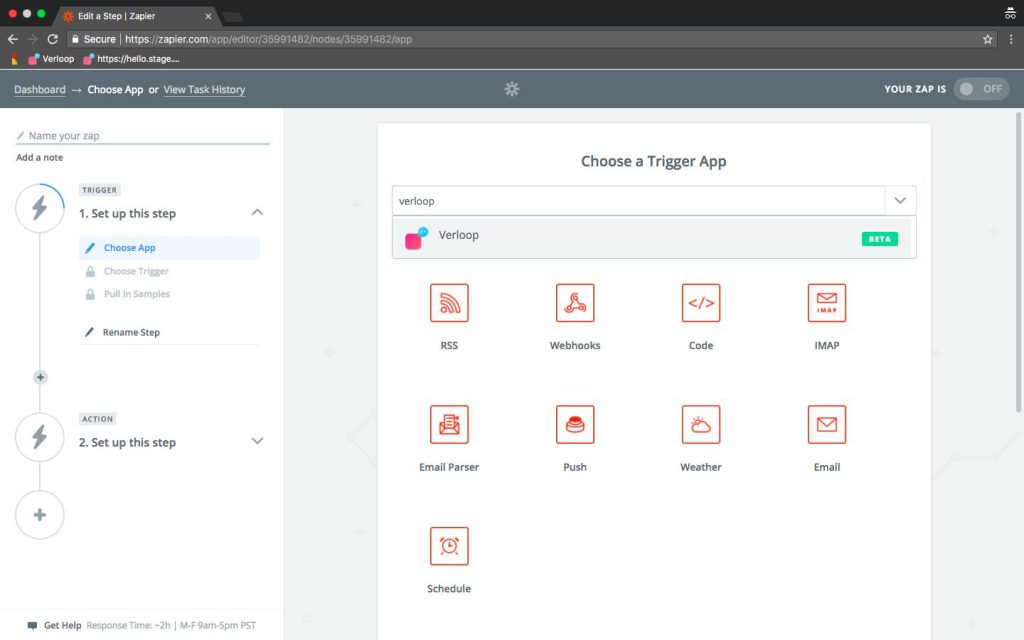
Connect Verloop.io Account
Now connect your Verloop.io account to this trigger. You can get the API key for Zapier integration from the recipe section of your Verloop.io account.
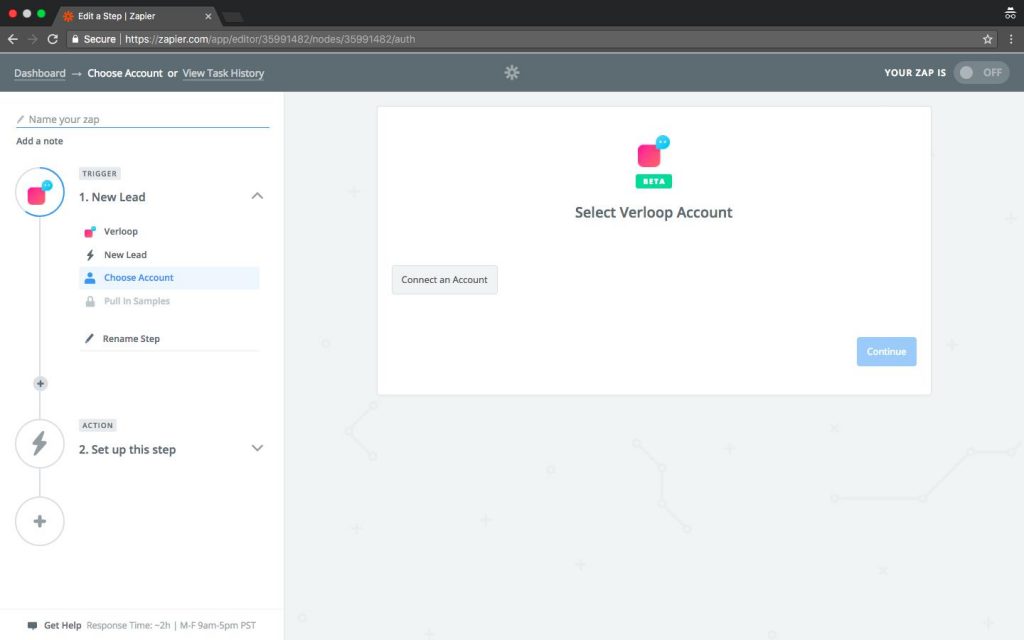
Choose Recipe
After adding the account, you have to select a recipe to connect to. Here we have selected the default Lead Generation recipe. We can verify that the connection is successful by fetching a sample lead.
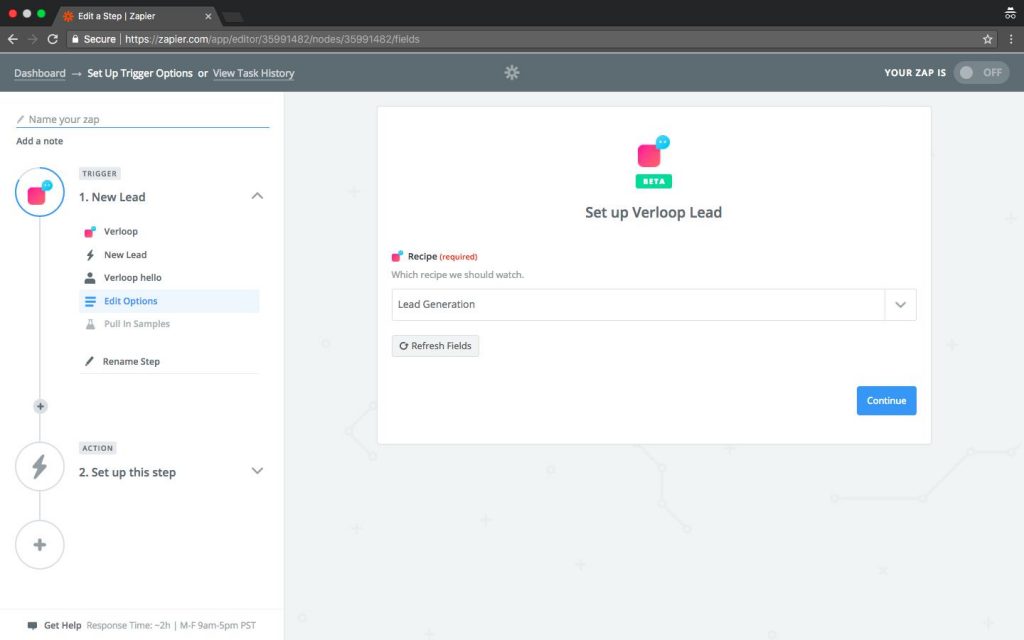

Choose an Action
Now that the trigger selection is complete, we have to select an action for the workflow. In this step, we shall choose Google Sheets as the action. This means that all our lead generation data goes into a Google spreadsheet.
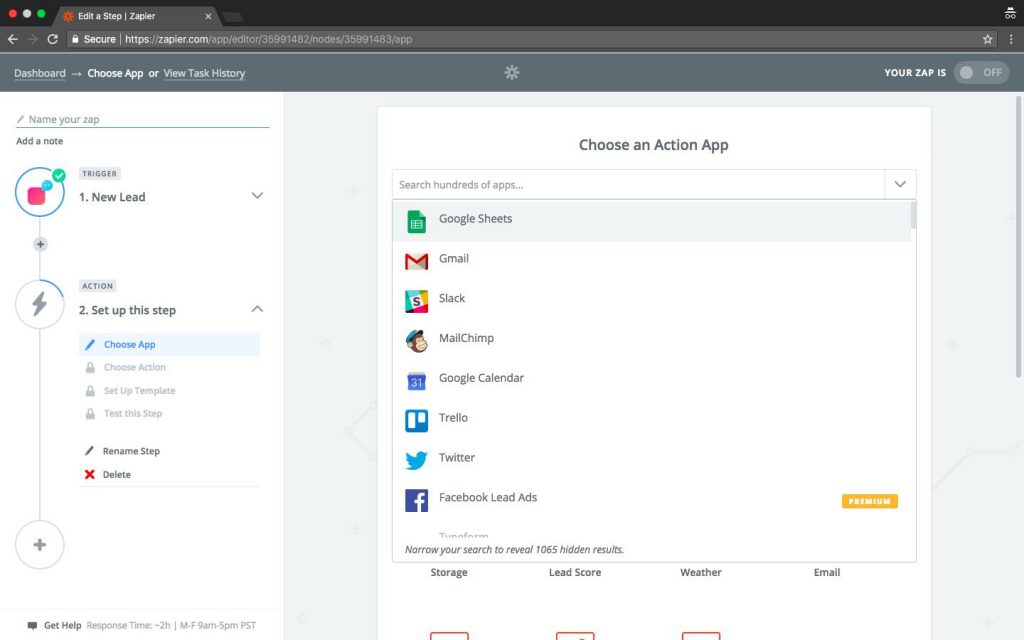
Whenever a lead is generated, it creates a row in a spreadsheet.

Connect your Google account
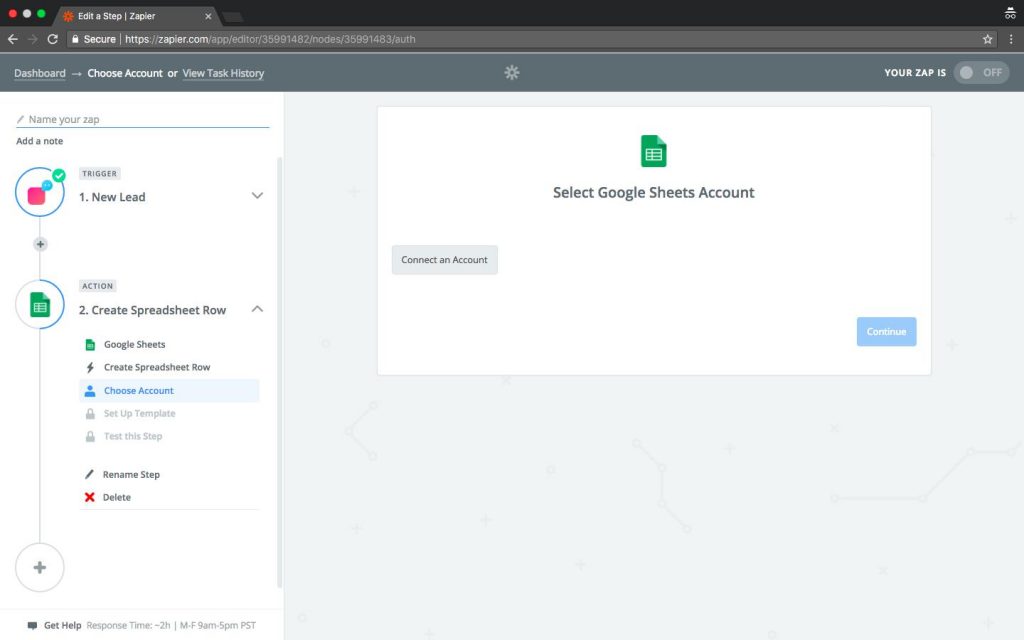
Choose a spreadsheet
After you connect your Google account, you can choose which file to connect to. You can also choose the sheet. Remember that the first row of the sheet should be the header and it should contain the names of the columns.
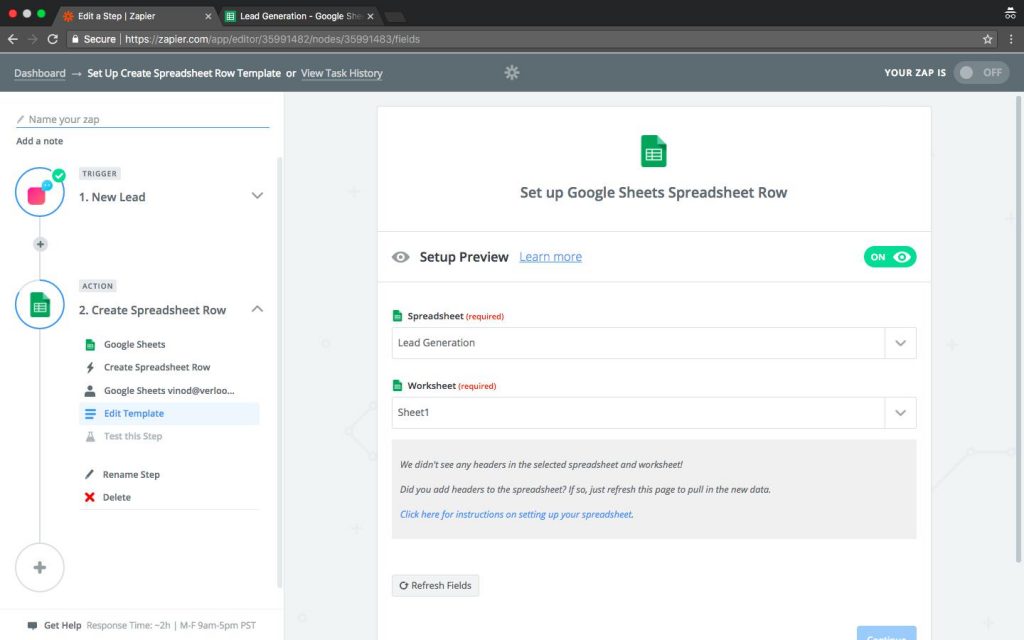
Map Column Names
In the next step, you have mapped the fields given by Verloop to the column names of the spreadsheet.
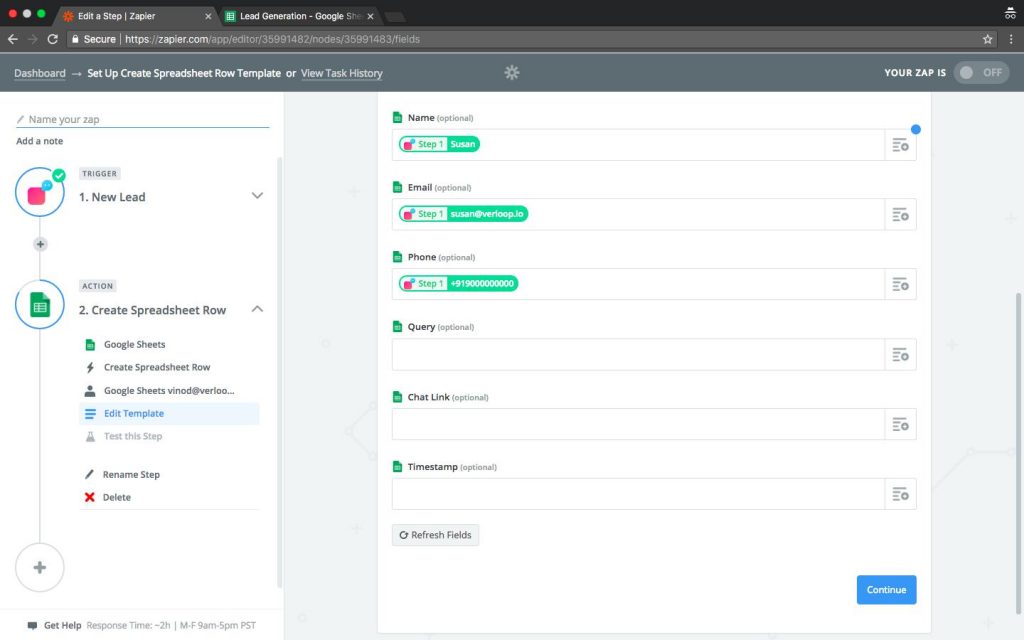
Now you can send a sample row to sheets and verify that it’s working.
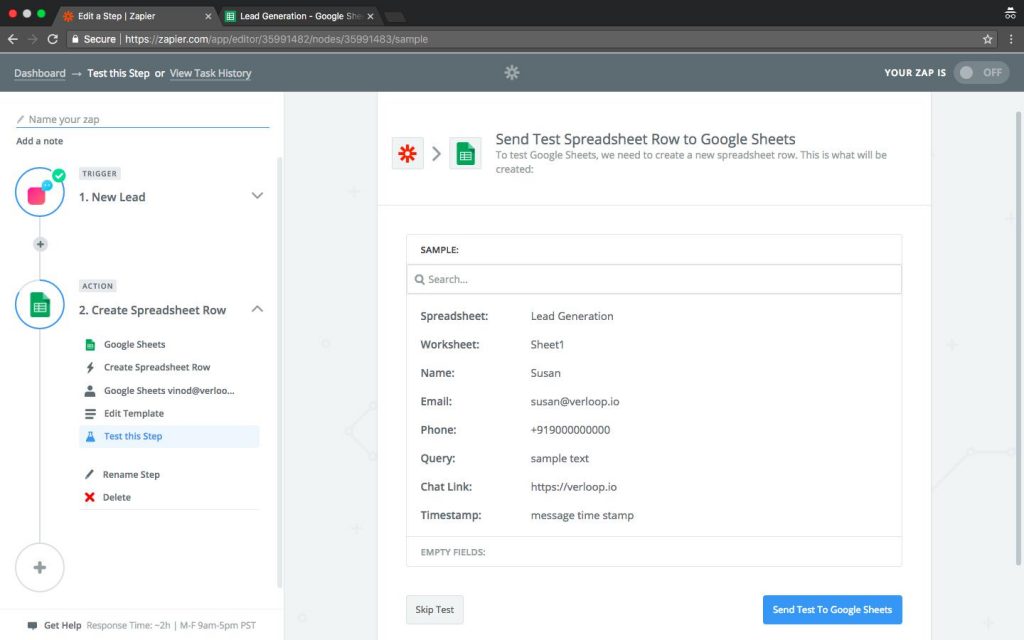
Send a sample row to the spreadsheet
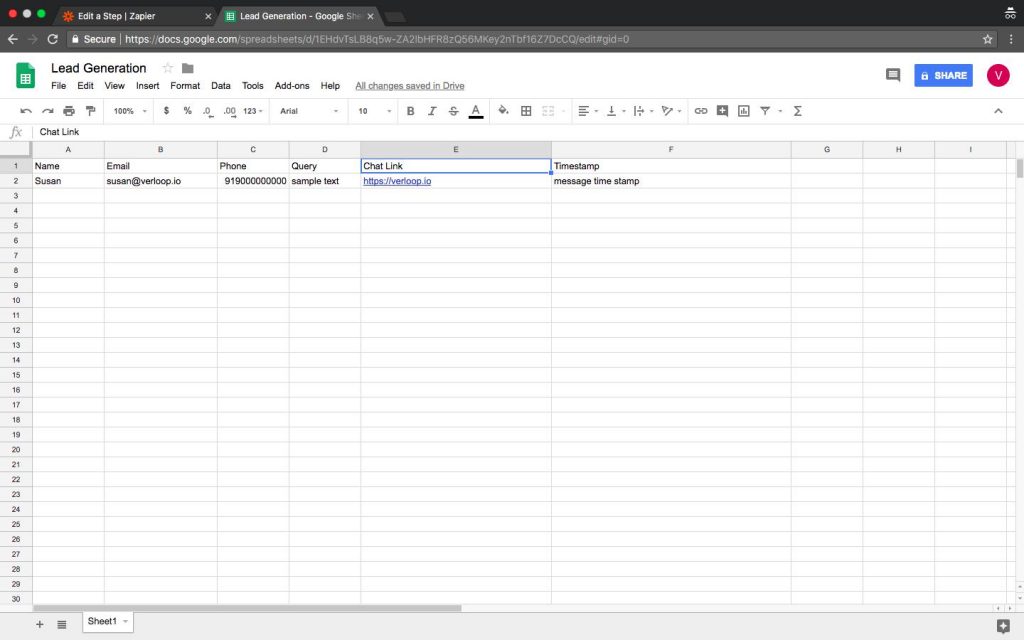
As the last step in the Zapier dashboard, you have to Turn On this workflow. You can choose to turn off this integration anytime using the Zapier dashboard.
Verify Zapier Integration
If you have completed the Zapier integration successfully, the Zapier button in your Verloop dashboard should turn blue.
